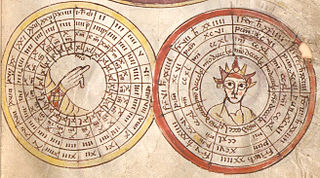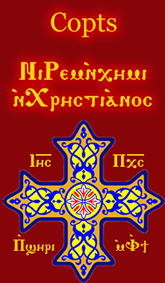Related Research Articles

A calendar is a system of organizing days. This is done by giving names to periods of time, typically days, weeks, months and years. A date is the designation of a single, specific day within such a system. A calendar is also a physical record of such a system. A calendar can also mean a list of planned events, such as a court calendar or a partly or fully chronological list of documents, such as a calendar of wills.

Esther is the eponymous heroine of the Book of Esther. In the Achaemenid Empire, the Persian king Ahasuerus seeks a new wife after his queen, Vashti, is deposed for disobeying him. Hadassah, a Jewess who goes by the name of Esther, is chosen to fulfill this role due to her beauty. Ahasuerus' grand vizier, Haman, is offended by Esther's cousin and guardian, Mordecai, due to his refusal to prostrate himself before Haman. Consequently, Haman plots to have all the Jewish subjects of Persia killed, and convinces Ahasuerus to permit him to do so. However, Esther foils the plan by revealing Haman's eradication plans to Ahasuerus, who then has Haman executed and grants permission to the Jews to kill their enemies instead, as royal edicts cannot be revoked under Persian law.

The Hebrew calendar, also called the Jewish calendar, is a lunisolar calendar used today for Jewish religious observance, and as an official calendar of the state of Israel. It determines the dates for Jewish holidays and the appropriate public reading of Torah portions, yahrzeits, and daily Psalm readings, among many ceremonial uses. In Israel, it is used for religious purposes, provides a time frame for agriculture, and is an official calendar for civil holidays, alongside the Gregorian calendar.

Judaism is an Abrahamic, monotheistic, and ethnic religion comprising the collective religious, cultural, and legal tradition and civilization of the Jewish people. It has its roots as an organized religion in the Middle East during the Bronze Age. Some scholars argue that modern Judaism evolved from Yahwism, the religion of ancient Israel and Judah, by the late 6th century BCE, and is thus considered to be one of the oldest monotheistic religions. Judaism is considered by religious Jews to be the expression of the covenant that God established with the Israelites, their ancestors. It encompasses a wide body of texts, practices, theological positions, and forms of organization.
A leap year is a calendar year that contains an additional day added to keep the calendar year synchronized with the astronomical year or seasonal year. Because astronomical events and seasons do not repeat in a whole number of days, calendars that have a constant number of days in each year will unavoidably drift over time with respect to the event that the year is supposed to track, such as seasons. By inserting an additional day or month into some years, the drift between a civilization's dating system and the physical properties of the Solar System can be corrected. A year that is not a leap year is a common year.

In astronomy, the new moon is the first lunar phase, when the Moon and Sun have the same ecliptic longitude. At this phase, the lunar disk is not visible to the unaided eye, but its presence may be detected because it occults stars behind it.

A week is a time unit equal to seven days. It is the standard time period used for cycles of rest days in most parts of the world, mostly alongside—although not strictly part of—the Gregorian calendar.
Shemini Atzeret is a Jewish holiday. It is celebrated on the 22nd day of the Hebrew month of Tishrei in the Land of Israel, and on the 22nd and 23rd outside the Land, usually coinciding with late September or early October. It directly follows the Jewish festival of Sukkot which is celebrated for seven days, and thus Shemini Atzeret is literally the eighth day. It is a separate—yet connected—holy day devoted to the spiritual aspects of the festival of Sukkot. Part of its duality as a holy day is that it is simultaneously considered to be both connected to Sukkot and also a separate festival in its own right.

Adar is the sixth month of the civil year and the twelfth month of the religious year on the Hebrew calendar, roughly corresponding to the month of March in the Gregorian calendar. It is a month of 29 days.

The Coptic calendar, also called the Alexandrian calendar, is a liturgical calendar used by the Coptic Orthodox Church and also used by the farming populace in Egypt. This calendar is based on the ancient Egyptian calendar. To avoid the calendar creep of the latter, a reform of the ancient Egyptian calendar was introduced at the time of Ptolemy III which consisted of the intercalation of a sixth epagomenal day every fourth year. However, this reform was opposed by the Egyptian priests, and the reform was not adopted until 25 BC, when the Roman Emperor Augustus imposed the Decree upon Egypt as its official calendar. To distinguish it from the Ancient Egyptian calendar, which remained in use by some astronomers until medieval times, this reformed calendar is known as the Coptic or Alexandrian calendar. Its years and months coincide with those of the Ethiopian calendar but have different numbers and names.

Av is the eleventh month of the civil year and the fifth month of the ecclesiastical year on the Hebrew calendar. The name comes from Araḫ Abu, "month of Abu", from the Babylonian calendar. The name Ab also appears in the Arabic language for the month of August in the Levant .The name first appears in Second Temple literature, such as Megillat Taanit. It is one of several months which are not explicitly named in the Hebrew Bible (Tanakh). It is a month of 30 days. Av usually occurs in July–August on the Gregorian calendar.

Iyar is the eighth month of the civil year and the second month of the Jewish religious year on the Hebrew calendar. The name is Babylonian in origin. It is a month of 29 days. Iyar usually falls in April–May on the Gregorian calendar.

The Babylonian calendar was a lunisolar calendar with years consisting of 12 lunar months, each beginning when a new crescent moon was first sighted low on the western horizon at sunset, plus an intercalary month inserted as needed by decree. The calendar is based on a Sumerian predecessor preserved in the Umma calendar of Shulgi.
A calendar era is the period of time elapsed since one epoch of a calendar and, if it exists, before the next one. For example, it is the year 2022 as per the Gregorian calendar, which numbers its years in the Western Christian era.

Counting of the Omer is an important verbal counting of each of the forty-nine days starting with the Wave Offering of a sheaf of ripe grain with a sacrifice immediately following the commencement of the grain harvest, and the First Fruits festival celebrating the end of the grain harvest, known as Feast of Weeks/Shavuot/Pentecost in Mosaic Law ; or in the varying current Jewish holidays traditions, the period between the Passover or Feast of Unleavened Bread, and Shavuot. This is the second of the three annual Mosaic Law feast periods.
Daf Yomi is a daily regimen of learning the Oral Torah and its commentaries, in which each of the 2,711 pages of the Babylonian Talmud is covered in sequence. A daf, or blatt in Yiddish, consists of both sides of the page. Under this regimen, the entire Talmud is completed, one day at a time, in a cycle of approximately seven and a half years.
A chronology of Jesus aims to establish a timeline for the events of the life of Jesus. Scholars have correlated Jewish and Greco-Roman documents and astronomical calendars with the New Testament accounts to estimate dates for the major events in Jesus's life.

Anno Mundi, abbreviated as AM or A.M., or Year After Creation, is a calendar era based on the biblical accounts of the creation of the world and subsequent history. Two such calendar eras have seen notable use historically:

Chabad mitzvah campaigns, or Mivtzo'im refer to the various mitzvah campaigns launched by the Lubavitcher Rebbe, Menachem Mendel Schneerson, for observance by all Jews. During the years 1967 to 1976, Schneerson called all Jews to observe ten basic "beginner's mitzvot"— which, because of their centrality to the Torah's guide to life, are ideally suited for a first experience of the mitzvah connection. In the years that followed there were campaigns for additional mitzvot as well.

Rosh HaShanah is the Jewish New Year. The biblical name for this holiday is Yom Teruah, literally "day of shouting or blasting." It is the first of the Jewish High Holy Days, as specified by Leviticus 23:23–25, that occur in the late summer/early autumn of the Northern Hemisphere. The High Holy Days comprises both Rosh HaShanah and Yom Kippur.
References
- ↑ Lance Latham (6 January 1998). Standard C Date/Time Library: Programming the World's Calendars and Clocks. Taylor & Francis. pp. 108–. ISBN 978-0-87930-496-6.
- ↑ Arthur Spier (1986). The Comprehensive Hebrew Calendar: Twentieth to Twenty-second Century, 5660-5860, 1900-2100. Feldheim Publishers. pp. 4–. ISBN 978-0-87306-398-2.
- ↑ Eleanor M. Nesbitt (2004). Intercultural Education: Ethnographic and Religious Approaches. Sussex Academic Press. pp. 16–. ISBN 978-1-84519-034-7.

